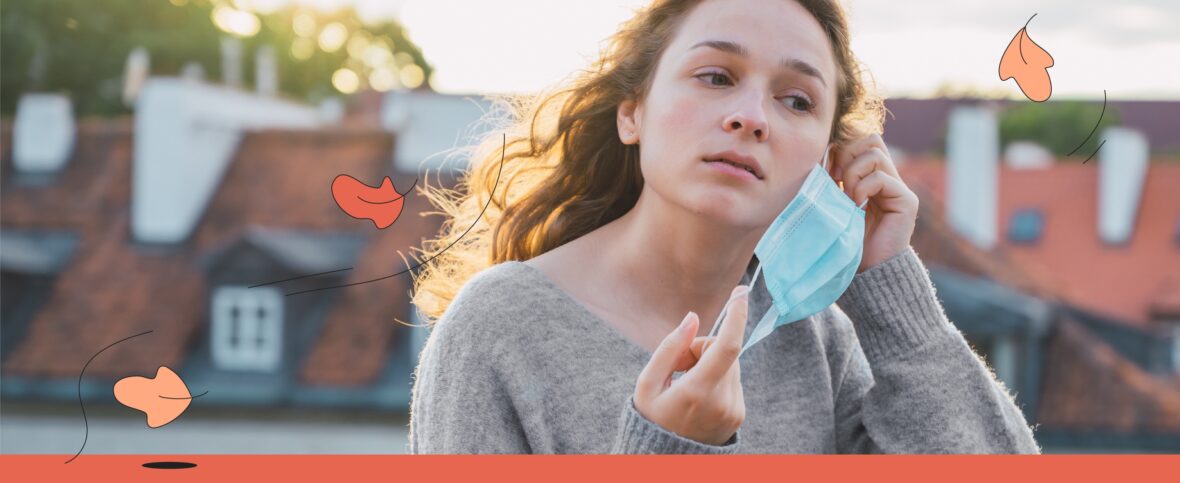See all > Covid-19

September 28, 2020 • read
How will COVID-19 end?
After seven months of living with COVID-19, a natural question on everyone’s minds is “When will life go back to normal?”. Researchers worldwide have been working around the clock to develop a vaccine, while everyday socializing — from work to parties — now happens online. Whether you’re tinkering in a lab or flattening the curve by staying at home, the ending to this chapter in history is still a mystery.
But this isn’t the first time a pandemic has swept through continents. In 1918, the Spanish flu infected millions of people. More recently, the SARS outbreak from 2002-2004 gave us modern pandemic learnings to draw from. What we know from the past gives us clues to how COVID-19 might end.
What exactly is a pandemic?
Before we consider how the pandemic will end, let’s take a look at what’s unique about the situation we find ourselves in with COVID-19. The World Health Organization has outlined a few key factors that define a pandemic from other patterns of infectious disease:
1. The disease spreads out of season
In the fall, students returning to school will often spread the seasonal flu within a community. This isn’t cause for alarm, but with a few additional characteristics, a virus can turn from a nuisance to a danger. COVID-19 cases were reported all over the world, even in countries where it wasn’t a normal time of year for flu to spread. When this happens, it’s a clue that the disease has unusual traits. Diseases that are unusual are a cause for concern because it’s unknown how fast they’ll spread, or how severe they’ll be.
2. It spreads in multiple hemispheres at one time
As the name suggests, a “pan”-demic is a health emergency that affects people all around the world. From Wuhan, China to cities in Australia, Africa, and beyond, the virus made its way between global hemispheres in a matter of weeks. The rapid spread around the world is uncharacteristic of a common flu, so it rightfully caused international alarm.
3. It’s a new disease
This is an important factor because when a virus is new, no one has built up an immunity to it. That leads to higher infection rates since your body doesn’t have any antibodies to battle the virus. It also means there’s no vaccine, and protecting people from infection until a vaccine is developed is difficult.
How might this story end?
There are a few likely scenarios for how the pandemic will end. Some of them are rooted in scientific breakthroughs, some depend on our biology, and others hinge on our social habits.
Scientists create a vaccine
With a vaccine, it’s possible to immunize people who haven’t been infected with coronavirus. Immunization is an ancient practice that involves introducing a small amount of a virus into a healthy person’s body. This controlled introduction gives the body a chance to build up antibodies. Antibodies are your body’s defense against pathogens. Once they develop, your body is more effective at fighting and beating the illness.
Outbreaks in communities are quickly contained
This takes the virus from pandemic to epidemic, meaning it’s contained within one region. Containment is an essential part of stopping the spread — it’s the reason we quarantine people with COVID-19. It’s simpler to find out where an outbreak began when the virus has only spread through one community. Quick containment of outbreaks will significantly reduce new infections, and decrease the number of cases overall.
Measures like social distancing, hand washing, and face masks are also helpful for slowing down virus spread. By being mindful of how the virus is transmitted, collective caution helps to reduce infections on a larger scale.
Communities develop herd immunity
Herd immunity would happen when a large enough number of people have caught and recovered from COVID-19. This could occur through outbreaks, or in a controlled way through vaccinations. When a certain number of people in a group are immune to a disease, big outbreaks stop happening. From there, the virus can be stopped as long as future generations continue getting vaccinated. For example, before there was a measles vaccine, the virus infected thousands of people per year. Now that there’s a vaccine, it’s very uncommon to get measles.
Though it’s theoretically possible to develop herd immunity to COVID-19 without a vaccine, that ending would be tragic. Outbreaks would cause large-scale illness and death before we see a decline in new infections.
The bottom line
It will take a combination of social efforts and scientific breakthroughs to end COVID-19. Unfortunately, the exact timeline for returning to normal life is still unknown. Collective efforts to flatten the curve has given us some headway, so until we know more, stick with the pandemic safety habits you’ve formed in 2020.
If you have questions about your health or need a prescription, but don’t want to go to an in person clinic, our online doctors can help.
